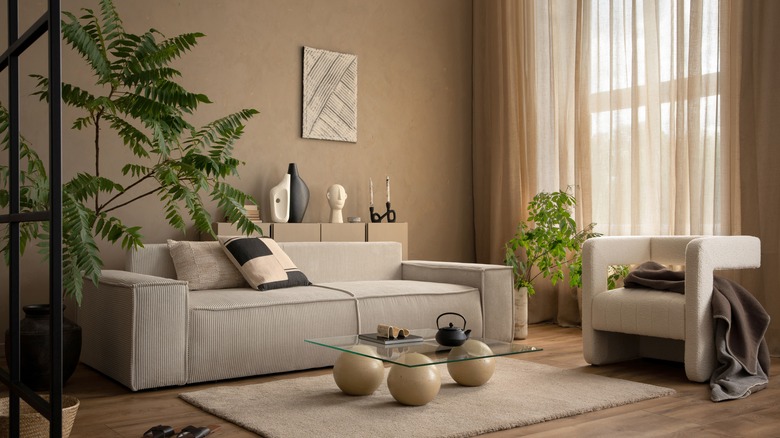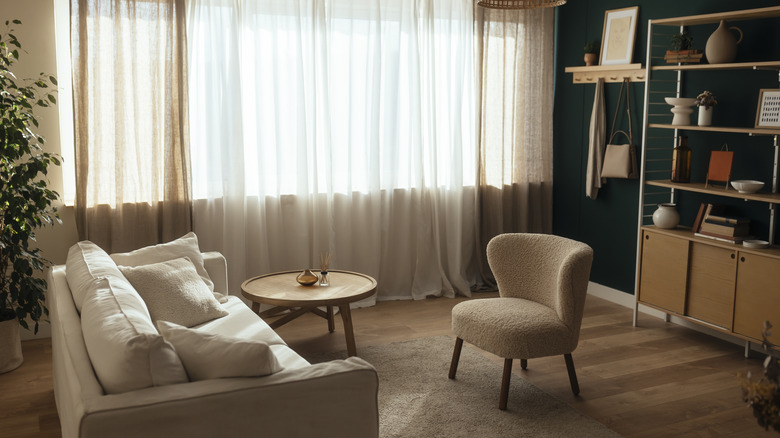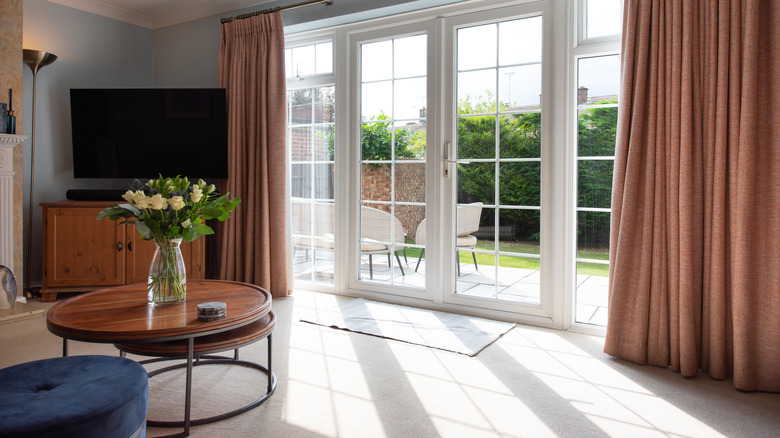How To Create A Cohesive Look With Living Room Curtains
When it comes to styling a living room, choosing your curtains probably isn't at the very top of your list. Instead, you're likely weighing paint color samples, considering what style sofa to get, and looking up pendant lights and floor lamps. Window treatments are usally one of the last details people pin down, but they're much more important than we give them credit for. They can make or break a room design, and if you want them to create a cohesive look in the space, you need to do two things. The first is to focus on matching them to the color palette of the room, and the second is to choose the correct texture for the space. If you get those two points right, your room will end up looking expertly designed.
Since curtains are vertical and typically reach up to the ceiling, they drag the eye upward and are one of the first things you notice when you enter a room. Because of this, they hold a lot of visual weight. If you choose a pair that plays it safe or goes against the style of the space, then it will either feel uninspired or off. It's a living room design mistake to avoid at all costs. Here's how.
Choose curtains that match your room's color palette
The easiest way to create a cohesive living room style is to choose a pair of curtains that match your room's color palette. To figure out what that is, look around the space and notice which colors keep reappearing. Take note of the color of the walls, sofa, and rug. Are they neutral or do they utilize specific hues? Next, look at the accessories and accents. What colors are your pillows, knick-knacks, and lamps? Are there any repeating colors in your artwork? Tally up the hues, and your palette will reveal itself.
When choosing the perfect curtains within that palette, there are two ways to approach it. The first is to match the panels to your sofa color. Since the couch is one of the most dominant details in the room, having matching curtains will make the space feel immediately cohesive. The second is to match it to the accents in the room. For instance, if your color palette utilizes neutral shades of cream, beige, and gray, but you have pops of navy in the throw pillows, artwork, and area rugs, choose dark blue panels to match.
Select curtains that add the correct texture
A room needs plenty of texture in order not to feel flat. For instance, if everything in the space is cotton or polyester, it will all look like it's blending in together. But if you add in pops of velvet, satin, boucle, and faux-fur, it looks more varied and designed. Because of this, you want to carefully consider what your curtain's texture is. For example, if you have a velvet sofa, you might want to skip adding velvet panels and instead make a mix of heavy and light fabrics. This will create balance and just enough contrast to make the space feel interesting. For instance, contrast the high-pile material with either sheer or linen curtains.
On the other hand, you also want to make sure the texture matches the vibe of the room. If you're curating a mid-century modern living room, choosing heavy tweed or textured linen would fit the style, but a fussy jacquard brocade would look completely off. You not only want to create contrast, but also balance.


